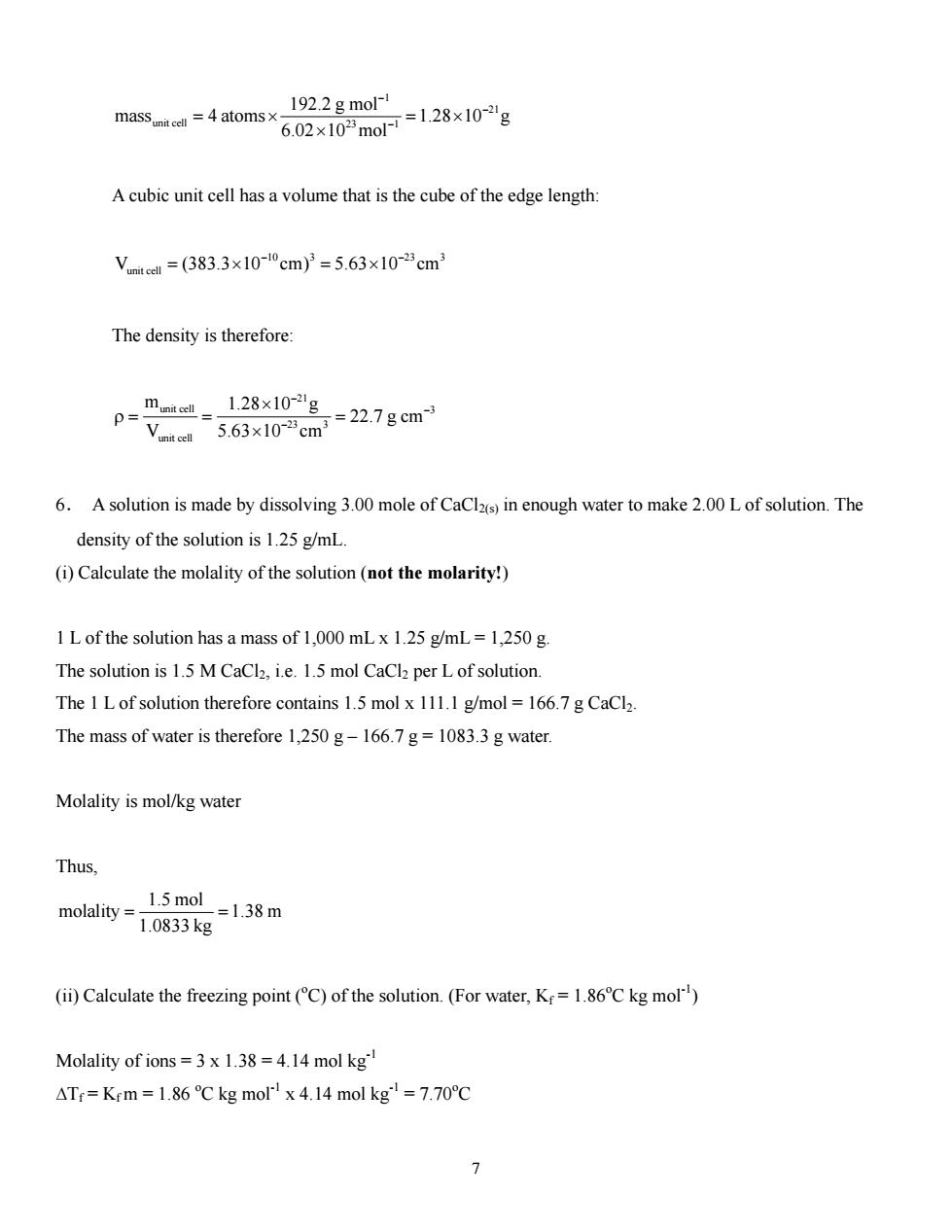正在加载图片...

192.2gmo- maSS=4 atoms× 6.02×102molΓ =1.28×10-2g A cubic unit cell has a volume that is the cube of the edge length Vmal=(383.3x10-"cm)3=5.63x10-cm The density is therefore: =22.7gcm 5.63×10-23cm3 6.A solution is made by dissolving 3.00 mole of CaCl(s in enough water to make 2.00 L of solution.The density of the solution is 1.25 g/mL. (i)Calculate the molality of the solution(not the molarity!) 1 L of the solution has a mass of 1,000 mL x 1.25 g/mL=1,250 g. The solution is 1.5 M CaCl2,i.e.1.5 mol CaCl2 per L of solution. The 1 L of solution therefore contains 1.5 mol x 111.1 g/mol =166.7 g CaCl2 The mass of water is therefore 1,250 g-166.7g=1083.3 g water. Molality is mol/kg water Thus, molality=1.0833kg 1.5 mol =1.38m (ii)Calculate the freezing point (C)of the solution.(For water,Kr=1.86C kg mol) Molality of ions=3x 1.38=4.14 mol kg" △Tf=Krm=1.86℃kg molx4.14 mol kg"=7.70℃ 1 21 unit cell 23 1 192.2 g mol mass 4 atoms 1.28 10 g 6.02 10 mol − − − = × =× × A cubic unit cell has a volume that is the cube of the edge length: 10 3 23 3 V (383.3 10 cm) 5.63 10 cm unit cell − − = × =× The density is therefore: 21 unit cell 3 23 3 unit cell m 1.28 10 g 22.7 g cm V 5.63 10 cm − − − × ρ= = = × 6. A solution is made by dissolving 3.00 mole of CaCl2(s) in enough water to make 2.00 L of solution. The density of the solution is 1.25 g/mL. (i) Calculate the molality of the solution (not the molarity!) 1 L of the solution has a mass of 1,000 mL x 1.25 g/mL = 1,250 g. The solution is 1.5 M CaCl2, i.e. 1.5 mol CaCl2 per L of solution. The 1 L of solution therefore contains 1.5 mol x 111.1 g/mol = 166.7 g CaCl2. The mass of water is therefore 1,250 g – 166.7 g = 1083.3 g water. Molality is mol/kg water Thus, 1.5 mol molality 1.38 m 1.0833 kg = = (ii) Calculate the freezing point (o C) of the solution. (For water, Kf = 1.86o C kg mol-1) Molality of ions = 3 x 1.38 = 4.14 mol kg-1 ∆Tf = Kf m = 1.86 o C kg mol-1 x 4.14 mol kg-1 = 7.70o C 7